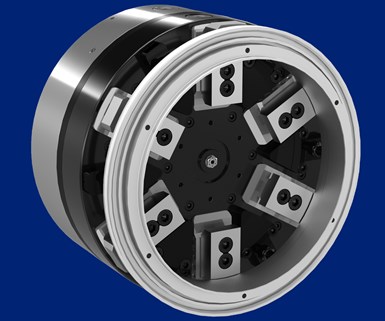SMW Autoblok's SJL Power Chuck Grips Thin-Walled Workpieces
SMW Autoblok’s SJL six-jaw (2+2+2) equalizing and self-centering power chuck is designed to provide high accuracy with thin-walled and deformation-sensitive workpieces.
Share






SMW Autoblok’s SJL six-jaw (2+2+2) equalizing and self-centering power chuck is designed to provide high accuracy with thin-walled and deformation-sensitive workpieces. The SJL can be switched from a 2+2+2 lever equalizing chuck to a classic six-jaw self-centering chuck depending on application requirements.
Utilizing the 2+2+2 lever balance capability provides high concentricity and axial runout accuracies by ensuring that the grip force of each jaw set equalizes as pairs and is in contact with the workpiece continuously. This minimizes any deformations or inaccuracies of raw materials.
The six-jaw self-centering option provides a concentric clamp locking plate for all sequential six jaws, enabling the chuck to hold round, machined diameters and thin-walled workpieces that require equal wall thicknesses. Specifically designed with centrifugal force compensation, this feature provides constant gripping force at higher speeds and feeds, vastly reducing production time, the company says.
The SJL is Proofline-sealed and protected from contamination while providing consistent lubrication for long maintenance intervals. This advanced power chuck accepts either tongue-and-groove or metric serrated top jaws and is available in sizes ranging from 225 to 400 mm.
Related Content
-
Medical Shop Performs Lights-Out Production in Five-Axes
Moving to five-axis machining enabled this shop to dramatically reduce setup time and increase lights-out capacity, but success relied on the right combination of workholding and automation.
-
Quick-Change Tool Heads Reduce Setup on Swiss-Type Turning Centers
This new quick-change tooling system enables shops to get more production from their Swiss turning centers through reduced tool setup time and matches the performance of a solid tool.
-
How to Mitigate Chatter to Boost Machining Rates
There are usually better solutions to chatter than just reducing the feed rate. Through vibration analysis, the chatter problem can be solved, enabling much higher metal removal rates, better quality and longer tool life.












